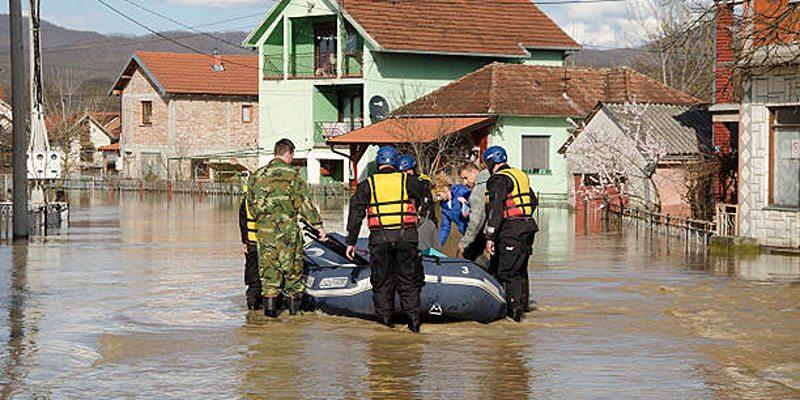Everything You Need to Know About The National Flood Insurance Program
Hurricanes are one of the most frequent natural disasters in the USA and one of the most expensive ones taking into account the amount of destroyed properties yearly. A common misunderstanding is that one's standard homeowners’ insurance will cover any losses caused by floods. This is where the National Flood Insurance Program (NFIP) comes in play The NFIP is a program of the Federal Emergency Management Agency, FEMA or insurance program established by Congress in 1968. This article covers all you need to know about NFIP, why you need it, what it provides, and how you can get NFIP for your property.
What is the National Flood Insurance Program?
 The National Flood Insurance Program (NFIP) is a Federal program administered through FEMA. Concerned with the protection of homes, businesses, and communities from the ravages of floods. NFIP allows property owners to purchase flood insurance that can help them recover from loss due to flood at rather lower costs as compared to under normal circumstances.
The National Flood Insurance Program (NFIP) is a Federal program administered through FEMA. Concerned with the protection of homes, businesses, and communities from the ravages of floods. NFIP allows property owners to purchase flood insurance that can help them recover from loss due to flood at rather lower costs as compared to under normal circumstances.
Why Was NFIP Created?
Before NFIP, flood insurance was either unavailable or normally unaffordable. It was a common practice that it took a huge dose of state support to restore the territory after the floods. To minimise reliance on federal disaster relief handouts, a more preventive form of strategy was developed hence defining NFIP.
How Does NFIP Work?
NFIP works by identifying areas at high risk of flooding, creating flood maps, and offering flood insurance to property owners in those areas. Property owners can purchase NFIP policies through insurance companies that partner with FEMA.
Insurance Coverage Options
NFIP offers two types of coverage:
Building Property Coverage
This covers the physical structure of your home or business. It includes foundations, walls, electrical systems, plumbing, heating, and cooling systems. The maximum coverage limit is $250,000 for residential properties and $500,000 for commercial buildings.
Personal Property Coverage
This covers personal belongings such as furniture, appliances, electronics, and clothing. The maximum coverage limit for personal property is $100,000.
What is Not Covered?
NFIP does not cover everything. Some exclusions include:
- Damage caused by moisture or mildew not directly related to the flood.
- Financial losses from business interruptions.
- Landscaping, pools, or fences.
Who Needs Flood Insurance?
Flood insurance is not just for those living in high-risk flood zones. According to FEMA, about 20% of all flood insurance claims come from properties located outside of designated high-risk areas.
Homeowners in High-Risk Flood Zones
If you live in a high-risk flood area (Special Flood Hazard Area), lenders often require flood insurance as part of mortgage agreements.
Homeowners Outside Flood Zones
Even if you live outside a flood zone, flood insurance is essential. According to FEMA, nearly 25% of all flood insurance claims come from low to moderate-risk areas.
Renters and Business Owners
NFIP offers coverage for renters and business owners, ensuring that both property and personal belongings remain protected.
Benefits of the National Flood Insurance Program
The National Flood Insurance Program (NFIP) provides critical financial protection and peace of mind in the event of flood-related damages.
1. Financial Protection
Flood damage can be incredibly costly. Without insurance, property owners may face large expenses for repairs and replacements. NFIP ensures financial security, offering peace of mind during flood events.
2. Affordable Coverage
NFIP provides subsidized and affordable premiums compared to private flood insurance options. Policies are designed to fit different needs and budgets.
3. Encourages Better Flood Management
NFIP works alongside communities to encourage better floodplain management practices. Participating communities implement regulations to minimize future flood risks.
How to Get Flood Insurance Through NFIP
Obtaining flood insurance through NFIP is a straightforward process designed to protect your property from potential flood damage.
Step 1: Check Eligibility
Flood insurance through NFIP is available in over 22,000 participating communities across the U.S. To find out if your area is covered, check with your local government or FEMA's website.
Step 2: Contact an Insurance Agent
Flood insurance policies are not sold directly by the federal government. You can purchase them through private insurance agents authorized to work with NFIP.
Step 3: Understand Your Needs
Evaluate your home's flood risk and determine how much coverage you need. Consider both building property and personal property coverage.
Step 4: Purchase a Policy
Once you choose a policy, there is typically a 30-day waiting period before it becomes active. Plan ahead to ensure you are protected before flood risks arise.
Common Myths About Flood Insurance
Flood insurance is often misunderstood, leading to several myths that can prevent homeowners from making informed decisions.
Myth 1: I Don’t Live in a Flood Zone, So I Don’t Need Insurance
Flooding can happen anywhere. Low-risk areas still face flood risks due to unexpected heavy rains, melting snow, or hurricanes.
Myth 2: Federal Disaster Aid Will Cover Flood Damage
Federal disaster assistance is not guaranteed and typically comes in the form of low-interest loans. Flood insurance provides direct payouts for covered damages.
How Does NFIP Help Communities?
 NFIP provides numerous benefits to communities, including:
NFIP provides numerous benefits to communities, including:
Floodplain Management
The National Flood Insurance Program (NFIP) plays a vital role in helping communities adopt effective floodplain management strategies. These strategies include zoning regulations, building design standards, and land-use planning to minimize flood risks. By enforcing these measures, communities can reduce the likelihood of property damage and loss of life during floods. Over time, these practices contribute to safer, more resilient neighborhoods that are better prepared to handle natural disasters.
Incentives for Participation
Communities that actively comply with NFIP requirements can benefit significantly, including reduced flood insurance premiums for their residents. By meeting these standards, municipalities encourage proactive measures like improving infrastructure, avoiding high-risk areas, and educating the public about flood preparedness. These incentives not only make insurance more affordable but also foster a culture of responsibility and long-term flood risk reduction.
Conclusion
The National Flood Insurance Program is a vital resource for homeowners, renters, and businesses, offering financial protection against costly flood damage. While many assume flood insurance is unnecessary, the reality is that floods can occur anywhere, regardless of risk level. Understanding the benefits and workings of NFIP can help you take the necessary steps to protect your property. Contact a local insurance agent today to explore flood insurance options and safeguard your home before disaster strikes.










